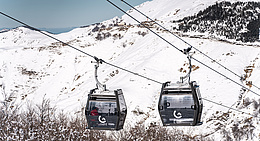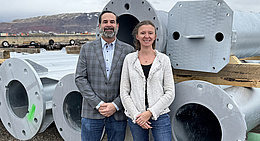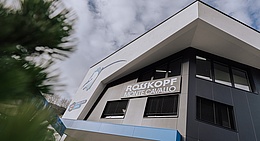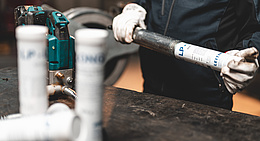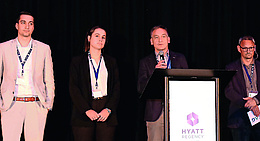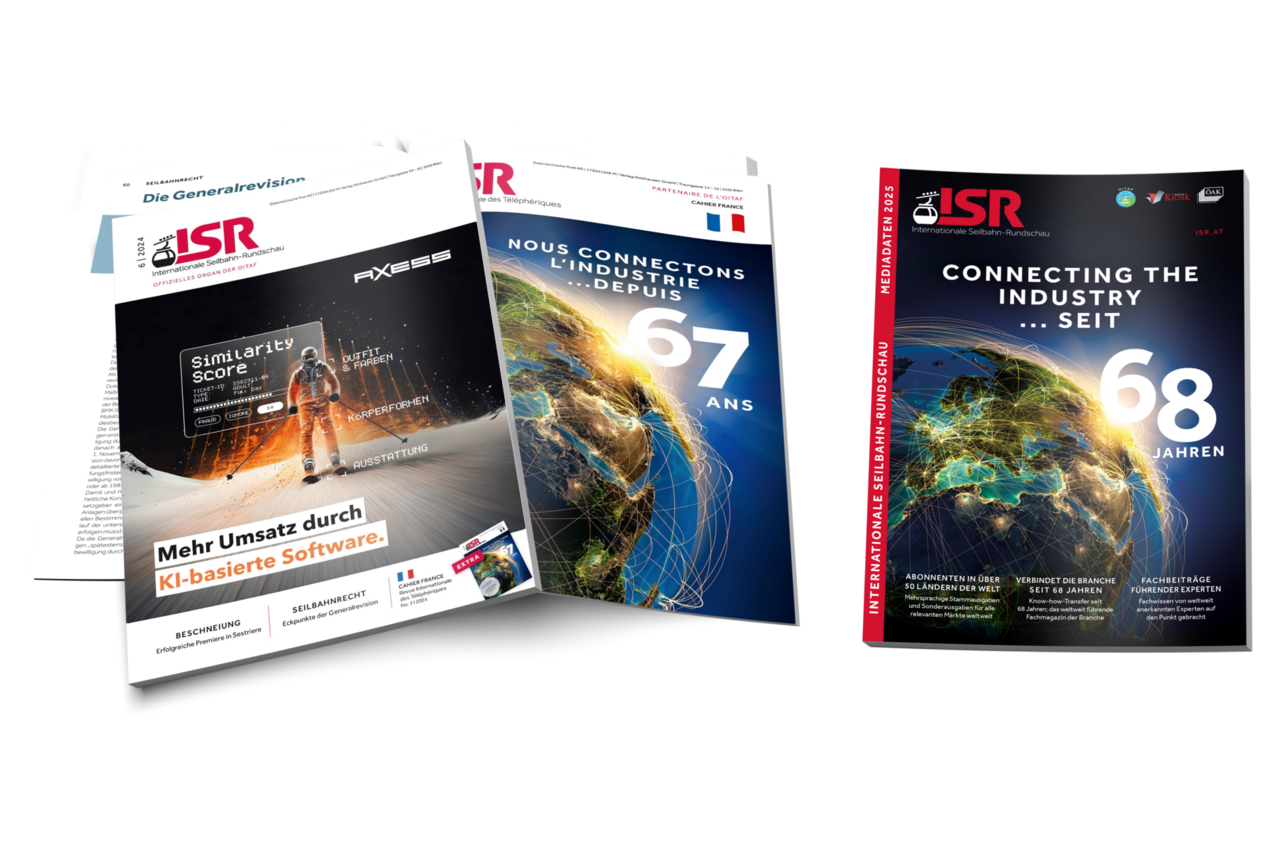ISR: Why is the new snow lance called Eos?
Andreas Dorfmann: We have a tradition of taking all our main product names from Greek mythology. Our Titan and Ventus fan guns are also named after Greek Gods. So we held an in-house competition to name our new product a year ago. All our employees were invited to put forward their ideas, and on that basis we chose the name Eos, the Greek goddess of the dawn and thus a symbol of a new day. In the context of our new lance, the name indicates the start of something new, the arrival of something that did not exist before.
ISR: To what extent does the Eos differ from your previous snow lances, and what is so special about the nozzle head?
Andreas Dorfmann: Well, there are many differences – in terms of design, efficiency (meaning energy consumption), and the starting temperature. I should particularly like to stress the new production process used for the Eos. Whereas the old head was an aluminum die casting, the heads of the Eos are individually produced from solid aluminum blocks using CNC milling machines. With the help of this technology, which provides a much better result than a casting for the subsequent production processes, the head can be a more compact design, i.e. less volume and surface area. That makes it less sensitive to wind and the weather. Above all it means that, even under the most difficult conditions for snowmaking, frozen nozzle heads are now a thing of the past.
ISR: What is the purpose of the heating system incorporated in the nozzle head?
Andreas Dorfmann: The heating is there primarily for start-up and shut-down and not so much for actual operation. If it rains or snows in the night, and a layer of ice forms on the lance, the whole head can be heated before snowmaking starts. That avoids problems with frozen nozzles and reduced output.
ISR: Does it prevent the head from freezing up during snowmaking?
Andreas Dorfmann: Under normal conditions, there is no need to heat the nozzle head once the lance is operating. That is part of the inside story of the new head: a form of thermal transmission develops between the flowing water and the aluminum head, so that there can be no ice build-up there. This step forward in lance head engineering has been achieved with the help of CNC technology, which permits each head to be machined individually with outstanding precision.
ISR: What can you tell us on the subject of energy efficiency?
Andreas Dorfmann: The nucleators and nozzles in the new Eos lances are based on the designs that have been so successful in the Titan. One result of the development work done on the Eos is that the nucleators use less compressed air. Consumption has been reduced to 195 l/min, the equivalent of 1.8 kW of electrical energy, and the nozzles now have an operating range of between 12 and 50 bar. The head itself has a throughput of up to 5.5 l/s for a snow output of 52 cu.m. per hour.
ISR: What configurations will the Eos snow lance come in?
Andreas Dorfmann: The Eos will be available for operation with central air supply (195 l/min) or individual compressors (1.8 kW) and in our three standard configurations: automatic (A), client (C) and manual (M). The Eos A is the stand-alone variant, which means it can be left to run all on its own in the automatic mode. The lances simply need water and power; they do the rest themselves. They have their own PLC controls, complete with display and weather station. The Eos A snow lance does not communicate within a system and is a fully automatic, stand alone solution.
The Eos C, on the other hand, operates within a snowmaking system and can receive weather data, for example, from another lance on the circuit. In big ski areas with large numbers of snow lances, it is enough to equip every fifth to tenth lance with a weather station and/or display. In this case, the lances are configured to communicate with one another and exchange data.
And then, of course, there is the Eos M, which is designed for manual switching at the lance and can be operated without a power supply. That is the solution for ski areas where air and water are available on the mountain but not electricity.
All the models naturally come with a choice of one, two or four settings.
ISR: The Eos snow lance was presented at Interalpin as a design study. What was the response to that?
Andreas Dorfmann: Reactions were very positive. Originally we simply wanted to exhibit the lance to show what we’re working on and the changes we’ve made to the head before starting production in 2016. But the Eos made such a positive impression that several customers said they were satisfied with what they had seen and wanted to order the new lance immediately without waiting till the end of the year. And in no time at all we had orders from Kitzbühel (45 lances), the Schulz Group (115) and also from Hafjell in Norway (more than 50 lances). This initial response shows that our design engineers have come up with a winner. Everyone who takes a closer look at the new nozzle head and the new production process and the advantages it brings immediately recognizes the improvements made and has confidence in the product.
Eos, the goddess of the dawn and symbol of a new day for the ancient Greeks, is the result of an ambitious project for us. Eos is the passion and constant endeavor for something new and better. Eos stands for performance, efficiency and design and is set to revolutionize snowmaking in 2016.
ISR: Thank you for the interview.
![[Translate to English:] Foto: DemacLenko](/fileadmin/_processed_/d/8/csm_EOS_0002_e03c14a860.jpg)
![[] Foto: DemacLenko](/fileadmin/_processed_/d/a/csm_EOS_Makro_70f39c2fc1.jpg)
![[Translate to English:] Foto: Leitner](/fileadmin/_processed_/a/8/csm_Vertragsunterzeichnung_Narvik_6_copyright_LEITNER_print_501f2d5c24.jpg)
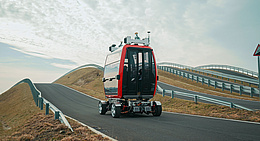
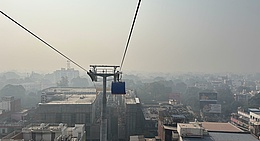
![[Translate to English:] (c) Doppelmayr](/fileadmin/_processed_/b/3/csm_85-ATW_Stechelberg-Muerren_Lauterbrunnen_CHE_001_6442c0520d.jpg)

